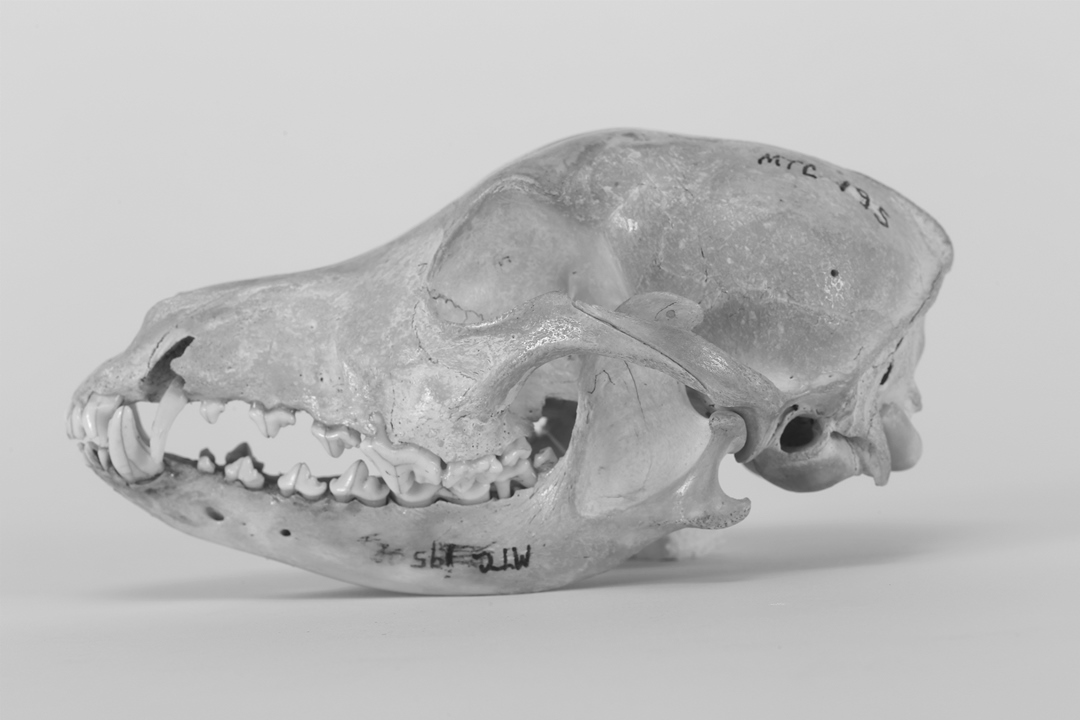DOMESTIC DOG*
Canis familiaris Linnaeus 1758
Order Carnivora : Family Canidae
*Introduced species
Domestic dogs are numerous all across Texas and include feral residents, free-ranging pets, and strays. The distinction between these three categories is a matter of degree. A free-ranging pet might become stray and perhaps finally feral. A feral dog is a wild animal. Even if owned at one time, the dog will no longer freely approach humans and usually shows strong fear of them. Such a dog is fully capable of surviving in nature and reproducing without aid from humans. The situation is further complicated by the fact that feral dogs can mate with coyotes and produce fertile offspring, which are called "coy-dogs." In the past, dogs and coyotes also interbred with red wolves, making positive identification of specimens sometimes difficult.
The skull of a domestic dog is very similar to that of coyotes and red wolves. A reliable means of distinguishing the skulls of coyotes and dogs involves the calculation of the ratio of palatal width (between the inner margins of the alveoli of the upper first molars) to length of the upper molar tooth row (from the anterior margin of the alveolus of the first premolar to the posterior margin of the last molar alveolus). If the tooth row is 3.1 times the palatal width, the specimen is a coyote; if the ratio is less than 2.7, the specimen is a dog.

Feral and free-roaming dogs feed mainly on garbage, carrion, and small mammals. They can do great damage to wildlife and should be eliminated whenever possible. Particularly vulnerable are white-tailed deer, which are sometimes run to exhaustion by packs of dogs. While conducting track count surveys of carnivores in Big Thicket National Preserve in the early 1980s, one of us (DJS) and his graduate students obtained track counts of domestic dogs that were higher than those values for several kinds of native animals and recorded several instances of dogs chasing deer. Dogs were commonly used in the late 1800s to hunt black bears, and they played a significant role in the demise of this species in Texas.
From The Mammals of Texas, Seventh Edition by David J. Schmidly and Robert D. Bradley, copyright © 1994, 2004, 2016. Courtesy of the University of Texas Press.
Natural Science Research Laboratory
-
Address
Museum of Texas Tech University, 3301 4th street, Lubbock, TX 79409 -
Phone
806.742.2486 -
Email
nsrl.museum@ttu.edu

